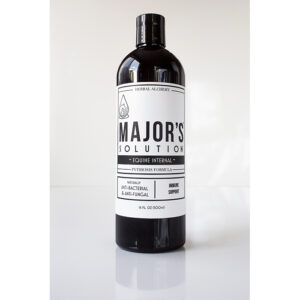Equine Pythiosis is a systemic infection that thrives in yeast rich and immunodeficient systems.
Caused by a fungal-like aquatic organism called Pythium insidiosum, Equine Pythiosis is not a true fungus, but behaves somewhat similarly. It exists in stagnant water or on grasses that have been exposed to the stagnant water. Although many horse and dog owners have never heard of this water borne plant pathogen, we believe it is more common than vets or researchers realize. No reporting of animal pythiosis cases is required. It is becoming more resistant and it’s also moving further north (some cases as far north as Arkansas, Washington State, and North Carolina). Equine Pythiosis is often misdiagnosed as a Summer Sore as the appearance is so similar. Other names are Florida Leeches or Swamp Cancer.



